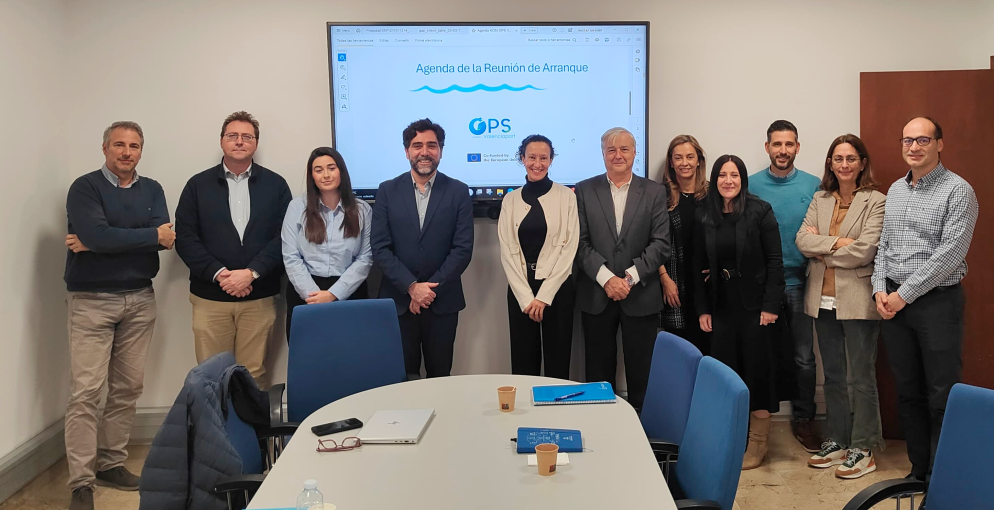- OPS Valenciaport will deploy the Onshore Power Supply infrastructure needed in the Port of Valencia to meet its goal of zero net emissions by 2030.
- The initiative, led by Fundación Valenciaport together with the Port Authority of Valencia, has a budget of almost 80 million euros, co-financed by CINEA’s Connecting Europe Facility program.
- The project also involves three terminals of the Port of Valencia: APM Terminals Valencia, CSP Iberian Valencia Terminal and Valencia Terminal Europa.
Valencia, December 11, 2024. – Yesterday was held at the headquarters of the Port Authority of Valencia (APV), the first meeting of the OPS Valenciaport project, ‘Onshore power supply for containerships, ferries and cruise ships in the Port of Valencia’.
The initiative, led by Fundación Valenciaport together with the Port Authority and involving 3 other entities of the Valenciaport Cluster, has a budget of around 80 million euros, co-financed by the Connecting Europe Facility (CEF) program of the European Executive Agency for Climate, Infrastructure and Environment (CINEA).
The overall objective of OPS Valenciaport is to deploy the Onshore Power Supply (OPS) infrastructure needed in the Port of Valencia to meet the 2030 net zero emissions target set by the Port Authority of Valencia and the Valenciaport cluster.
This deployment will enable the supply of shore-side electricity to ferries, cruise ships and container ships at three terminals of the Port of Valencia: APM Terminals, CSP and Trasmed.
Specific objectives of the initiative include the deployment of a new primary electrical substation; the electrical interconnection between this new substation and the existing one; the study of the necessary components to provide OPS to all passenger and container terminals of the port, including an intelligent energy management system and the evaluation of different OPS demand scenarios and renewable generation; the installation of OPS infrastructure in the 3 terminals and the installation of photovoltaic production plants at different points of the electrical grid within the port.
During the period 2028-2051, 32,993 container ship calls, 14,323 ferry calls and 2,152 cruise ship calls are expected to be connected to the OPS, creating an aggregate demand of 1,331,238 MWh, reducing environmental externalities in the Port of Valencia by 643,689 tons of CO2e, 248 tons of SOx and 317 tons of PM and generating an economic net present value of more than 350 million euros.
The Port Authority of Valencia has developed its own Clean Energy Supply Plan and Zero Net Emissions Plan to achieve carbon neutrality by 2030, analyzing the carbon footprint by port economic sector and defining strategies together with the Valenciaport cluster, as well as short and medium term actions.
OPS Valenciaport will contribute to achieving the Port of Valencia’s carbon neutrality target, reducing its carbon footprint by approximately 40%. In addition, the deployment of the OPS infrastructure will help meet the requirements of the Fit for 55 Package, providing OPS connectivity to all of the Port’s container and passenger terminals in their current configuration.
The initiative is part of the global EALING project, ‘European flagship Action for coLd ironING in ports’, which aims to accelerate the deployment of OPS facilities in European Union seaports.
The OPS Valenciaport consortium
The consortium that will develop the project is made up of the Port Authority of Valencia, APM Terminals Valencia, CSP Iberian Valencia Terminal, Valencia Terminal Europa and Fundación Valenciaport, which will coordinate the project, both technically and administratively, and will also be the interlocutor with the European agency CINEA.


